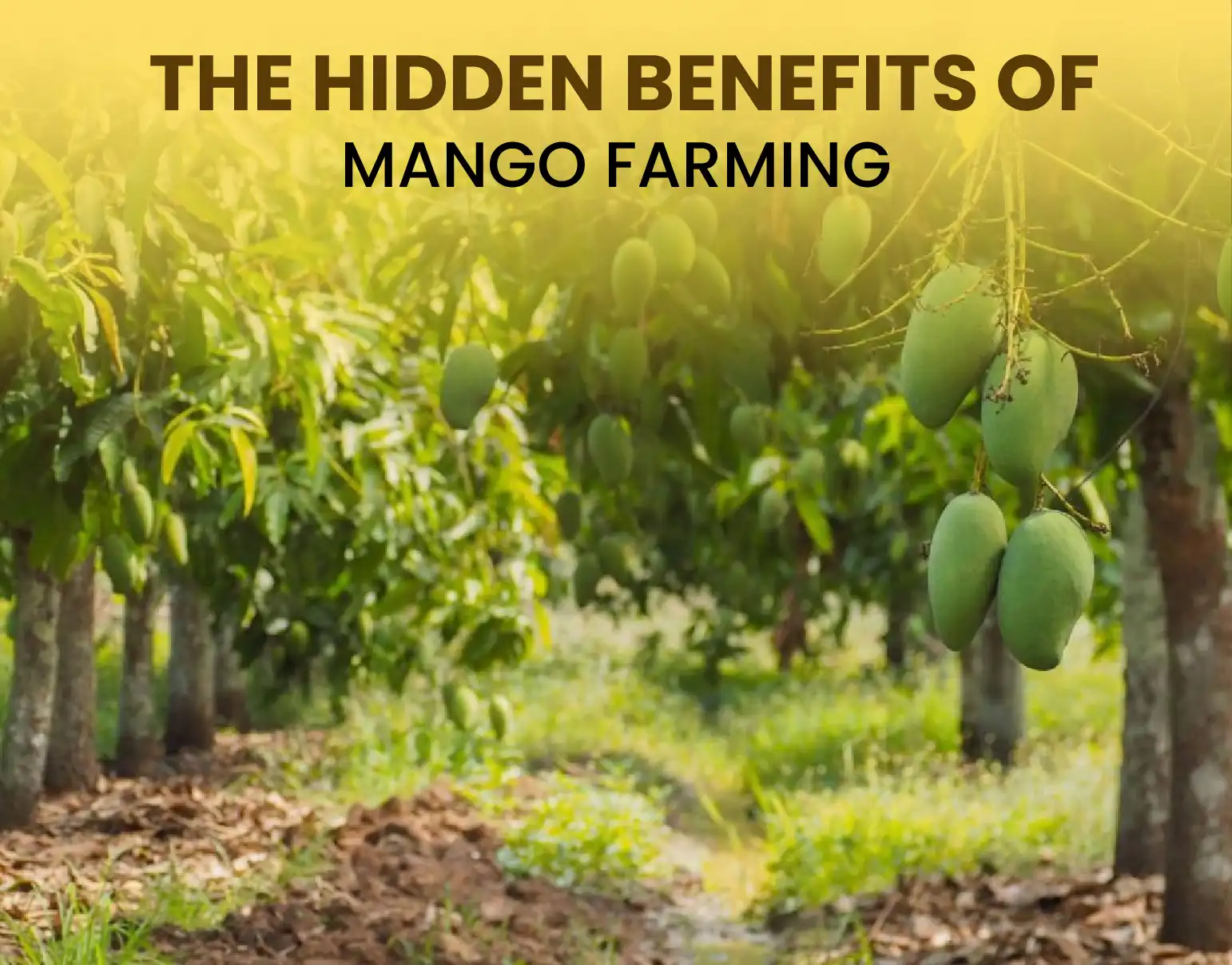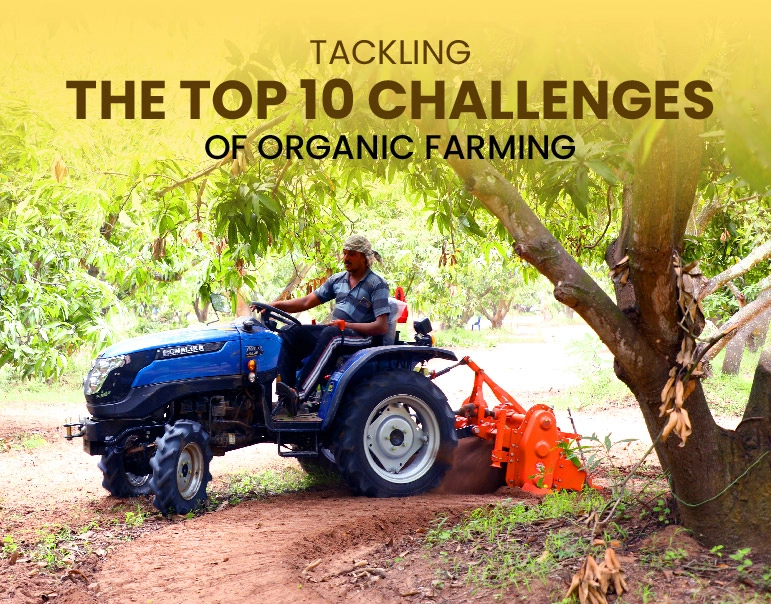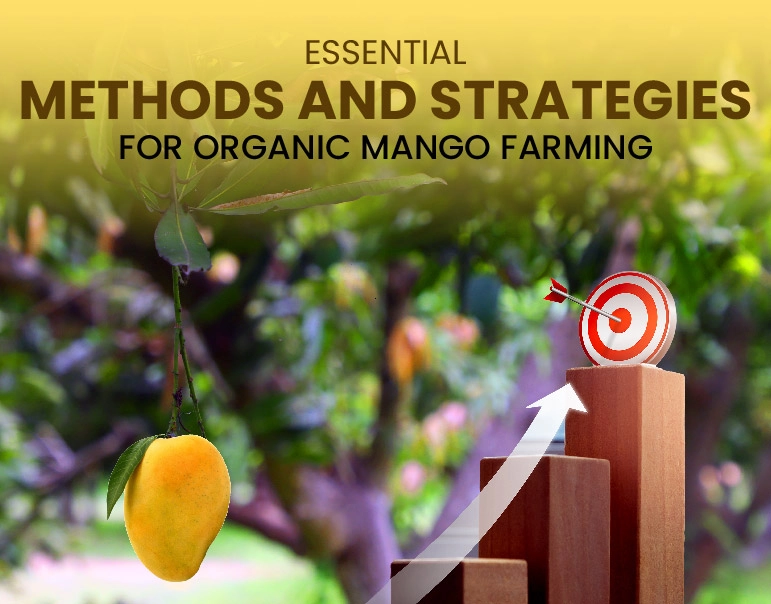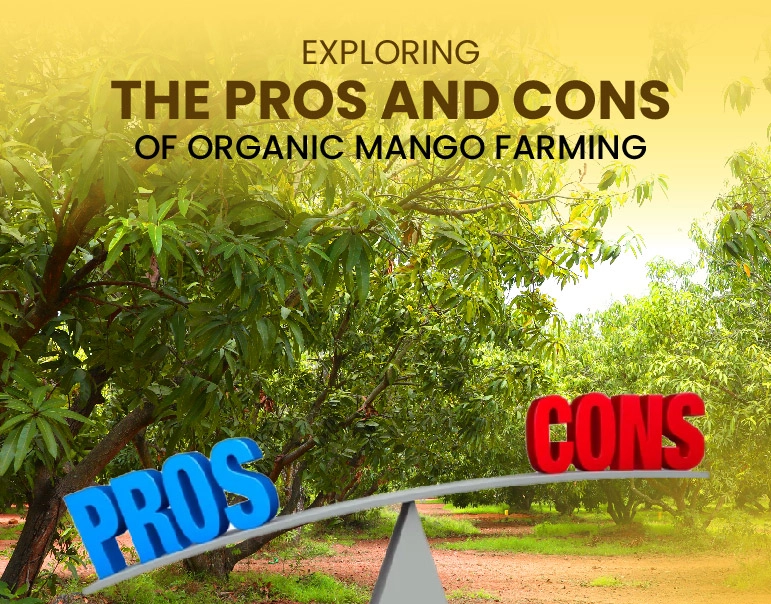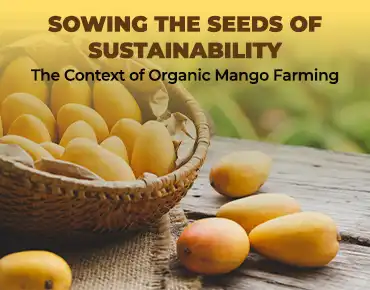Five Tips for Ultimate Mango Farmland in India
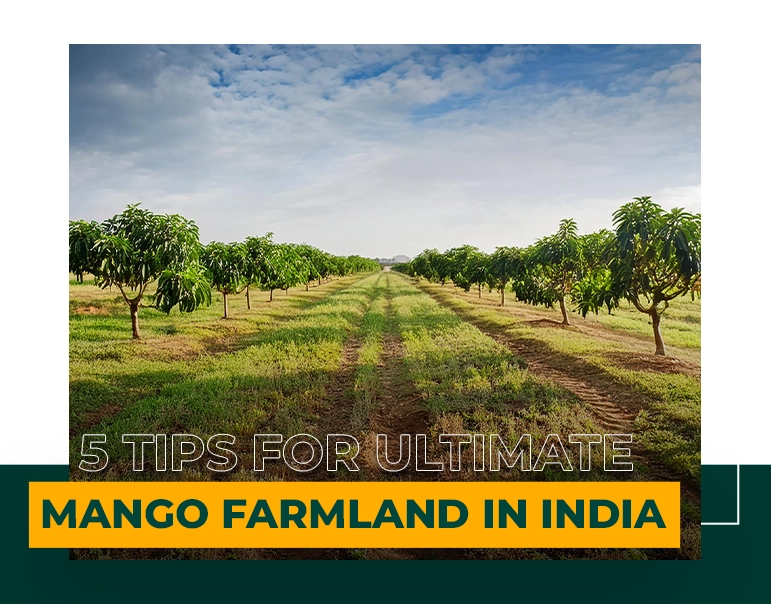

Mango farming in India is not just an agricultural practice; it’s a cultural legacy that has been passed down through generations. As the demand for high-quality mangoes continues to soar both domestically and internationally, optimizing mango farmland has become more crucial than ever. With over 1,000 varieties of mangoes grown across the country, farmers have the unique opportunity to cultivate this beloved fruit while contributing to the economy and preserving their heritage. This blog presents five essential tips for creating the ultimate mango farmland in India, ensuring that your mango farming venture thrives and yields bountiful harvests.
Picking the right region and ensuring that the soil is ideal are the most critical stages in encouraging a valuable mango crop.
Temperature: Tropical and subtropical locales are perfect for mango plants to succeed. During the creation season, they need lots of light, warm temperatures, and especially streaming precipitation. The ideal temperature range for mango advancement is somewhere between 24°C and 30°C during the day and generally 15°C at night.
The best districts for mango cultivation are Tamil Nadu, Maharashtra, Uttar Pradesh, Andhra Pradesh, and Gujarat. Each region offers exceptional varieties, taking into account the local climate conditions.
Nature of Soil: Mango trees prefer depleted, sandy soils with a pH between 6.0 and 7.5. To determine the necessary upgrades and changes to the soil based on the specific situation, it is crucial to conduct a soil test.
If the soil should be energetically messy or acidic, mull over adding regular matter, similar to manure, or setting ruining fertilizer close by to help failure and overflow. Mixing gypsum can assist in compacting soils that are already compacted.
Geography: Select ground with sensitive grades to thwart waterlogging, which can hurt the hidden underpinnings of mango plants. Stay away from districts that are prone to flooding or irrational upkeep.
Land Arranging: Before planting, prepare the ground by wiping out trash, shakes, and weeds. Even out and fold the field to create a more sensible setting for your mango trees.
High-thickness planting (UHDP), a unique method, can fundamentally extend mango farms.
Standard readiness-out systems recommend secluding trees 10–12 meters apart. Notwithstanding, the UHDP considers laying out additional trees per hectare and spots them closer together, far off a couple of meters.
Advantages of UHDP: This plan ensures appropriate land use and regularly updates the area for each unit. Moreover, it employs automated integration and considers a more straightforward tree association.
Varietal Selection: Choose less conspicuous individual plants or semi-small social groups that are better suited for dense planting. These bundles enhance land utilization and initiate productivity earlier, leading to faster theoretical growth.
Eminent Varieties: "Kesar," "Alphonso," and "Dasheri" are two or three UHDP-proposed packs that are notable for their surprising yield potential and unusual typical thing quality.
The board's frameworks: To assist the extended number of trees and assure their ideal course of events, make a liberal home board with structuring that unites genuine water framework, treatment, and disrupting impact control.
Arranging Trees: Prune inconceivable trees regularly to maintain an open shade structure that promotes wind current and daylight penetration.
Helpful water The board truly needs to augment mango yield, particularly in locales where precipitation plans are irregular.
Framework for Spill Water: This strategy ensures obvious immersion levels while limiting water waste by organizing water directly onto each tree's root zone. In high-thickness homes, where standard water structures could lead to an unbalanced water course, the spillwater framework plays a particularly significant role.
The premise is to invest in a state-of-the-art stream water structure system that unifies producers and is specifically designed for typical thing trees. Consistently search for impediments or segments to remain cognizant of boundaries.
Water Prosperity : Water-gathering structures are completed to collect and store water for use by the water framework during dry seasons. This arrangement reduces dependence on external water sources while also apportioning water.
Limit Plans: To store accumulated water, use lakes or tanks. Ensure that these limit plans are covered to prevent contamination and dispersal.
Seeing Soil Wetness: Use soil moisture sensors to impartially screen drenched quality levels, allowing you to change water structure plans based on genuine needs rather than surmise.
Water Framework Sorting Out: To extend water use and assure basic tree improvement, support a water structure plan that thinks about meteorological examples and soil lightness data.
Perhaps the primary practice in mango headway is pruning, which mainly further creates tree thriving and the idea of typical things.
Further creating air spread : Regular pruning reduces the risk of severe diseases such as fine design or anthracnose by increasing air circulation within the shade. As a result, it increases the amount of light that the tree receives, leading to an improvement in typical traits.
Timing: After a social event, regularly prune trees when they are at their slowest. This timing prevents the plants from taking on too much weight and also gives them a significant amount of time to recover before the next season begins.
Tree Trim: Immediately after purchase, prune any dead or crowded branches to help the tree maintain its optimal shape. In addition to enhancing the quality of the product, this arrangement aids in the completion of various projects.
Systems: Use heavenly, sharp mechanical assemblies to rapidly make great, repairable cuts during pruning. Kill any hurt or tarnished branches promptly to keep the illness from spreading.
Integrated Pest Management (IPM): Remember to use IPM systems as part of your routine to limit the use of chemicals and control common pests. Engage beneficial insects such as lacewings and ladybugs, which actively hunt down harmful pests such as caterpillars and aphids.
Monitoring Pests: Continuously inspect your home for confirmation of confusion or rodent assaults. At the outset, the early district envisions that using customary controls or standard pesticides would be a profitable strategy.
Credibility is crucial for mangos to thrive over time. Attempting eco-obliging techniques will not only protect the environment but also foster additional growth.
Organic Fertilizers: Dispose of common waste materials instead of made, organized materials, such as compost or vermicompost. This procedure reduces material flooding into adjacent streams and increases soil productivity.
Nutrient Management: Direct regular soil testing to determine the need for supplements based on the specific circumstances, and then plan your standard availability system accordingly. Specifically, when the atmospheric conditions are slow, incorporate cover yields or green fertilizers into the soil to increase its productivity.
Crop Rotation: At this point, distribute cover yields evenly or in the middle between mango fragments to reliably revive soil creation and reduce problem areas. Turning crops not only disrupts unfavorable cycles but also contribute to structural destruction by redistributing air and updating responsiveness through various underground roots.
Community Engagement: Assist contiguous farmer cooperatives or countries in expanding their workplaces to facilitate the exchange of information about utilitarian techniques and market plans. Understanding your neighborhood provides valuable experiences that aid in refining your headway methodologies.
Workshops & Training: Take part in studios run by NGOs or cultivating universities that are committed to executing sound headway techniques that are unequivocally tweaked to improve mangoes.
In conclusion, transforming your mango farmland into a thriving enterprise requires a combination of traditional knowledge and modern agricultural practices. By choosing the right location and soil, implementing Ultra-High-Density Planting techniques, optimizing irrigation methods, maintaining regular pruning schedules, and focusing on sustainable practices, you can significantly enhance productivity and profitability. As the world increasingly seeks premium mangoes, adopting these tips will help secure your place in this competitive market while honoring the rich legacy of mango cultivation in India. Embrace innovation and sustainability to ensure a prosperous future for your mango farming venture!

